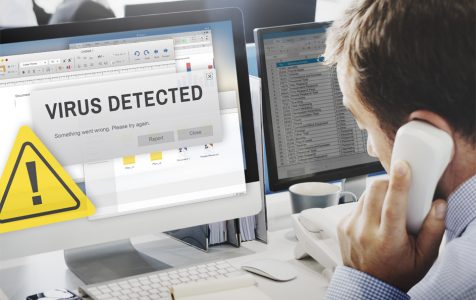Trojans or backdoor malware entities are the most lethal of all computer viruses because they allow cybercriminals to have control over computer networks from a safe hide out. Not only that, Trojans can actually be used to download other malware entities, including ransomware strains that lock out victims out of their files and folders. And the fact that they have become so common is a worrying development as we all depend on computers in one way or another.
What is the AZORult Virus?
The AZORult virus is a new entry in the now crowded field of high-risk Trojans or info stealer viruses. AZORult is capable of stealing sensitive data from a computer and sending it to a command and control center that is run by cybercriminals. Data stolen by the malware includes system information, browser history, cookies, passwords, email accounts, cryptocurrency wallets, FTP accounts, and XMPP clients. Newer versions of the malware can take screenshots every 30 seconds or so, meaning that even if you were to clear your browsing history or change your passwords, the risk of the malware stealing your information does not diminish.
The AZORult virus is mostly spread via phishing campaigns that involve deceptive texts and emails that trick users to opening infected attachments. A typical spam email contains a fake job application and an attached CV that once clicked, instigates the infection process. Avoid falling into this trickery as much as you can.
How to Remove AZORult Virus
Granted, it is hard to tell that your computer has been infected by the AZORult virus. That is unless a cybersecurity expert or an anti-malware software such as Outbyte Antivirus points this out to you. But should you see any symptoms such as reduced PC performance, excessive CPU usage, unusual network activity, or strange processes running in the Processes tab on the Task Manager, you have cause for concern.
Start by booting your device into Safe Mode with Networking and scan it with Outbyte Antivirus.
If you are unsure of how to get to Safe Mode with Networking, here are the steps that you need to take:
- Open the Run utility by pressing the Windows + R keys on your keyboard.
- Run the following command: msconfig.
- Go to the Boot tab and select Safe boot. Under this option, tick Network.
- Restart your PC.
The procedure above works for both Windows 10/11 and 7 devices. A word of caution, if you don’t uncheck the options that you select above, your PC will always boot into Safe Mode with Networking. So, untick them as soon as you are done troubleshooting the malware infection.
Now that your computer is operating on Safe Mode, launch the anti-malware and wait for it to complete the malware detection and removal process.
From our experience, it is best to clean your computer with a PC repair tool after the anti-malware is done removing the AZORult virus. The repair tool will delete all junk files, including browsing histories, cookies and temp files. It will also repair broken and corrupt registry entries. The matter of deleting unnecessary files and folders is especially important because most malware entities take advantage of the clutter to go undetected.
Supposing you don’t have the luxury of using an anti-malware software to delete the virus from your computer, is there any other way for you to remove the AZORult virus? Luckily, there are multiple Windows recovery options that work well against malware entities. Be warned that some of them come at the cost of losing your files for good.
Protect Your Computer from Azorult Virus
How do you prevent malware like the AZORult virus from infecting your device? Here are a few short tips:
- Don’t be too quick to reply or interact with email from unknown sources. Verify the authenticity of such emails first.
- Constantly check that your anti-malware defenses are working as most malware entities will try to disable them.
- Reduce the amount of clutter on your device by cleaning it with a PC repair as often as you can. That way, even if a malware entity did find ways to infiltrate your device it won’t have much in the way of data to steal.
- Create a backup of your files as that way it will be easier for you make the hard decision of resetting, deleting or reinstalling a new OS.
- Finally, develop a concrete cybersecurity strategy for you and your team because a common response to cybersecurity risks reduces the risks for everyone.
Hopefully, this article has answered your questions including what the AZORult virus can do. If you have something to add, feel free to use the comment section below.
